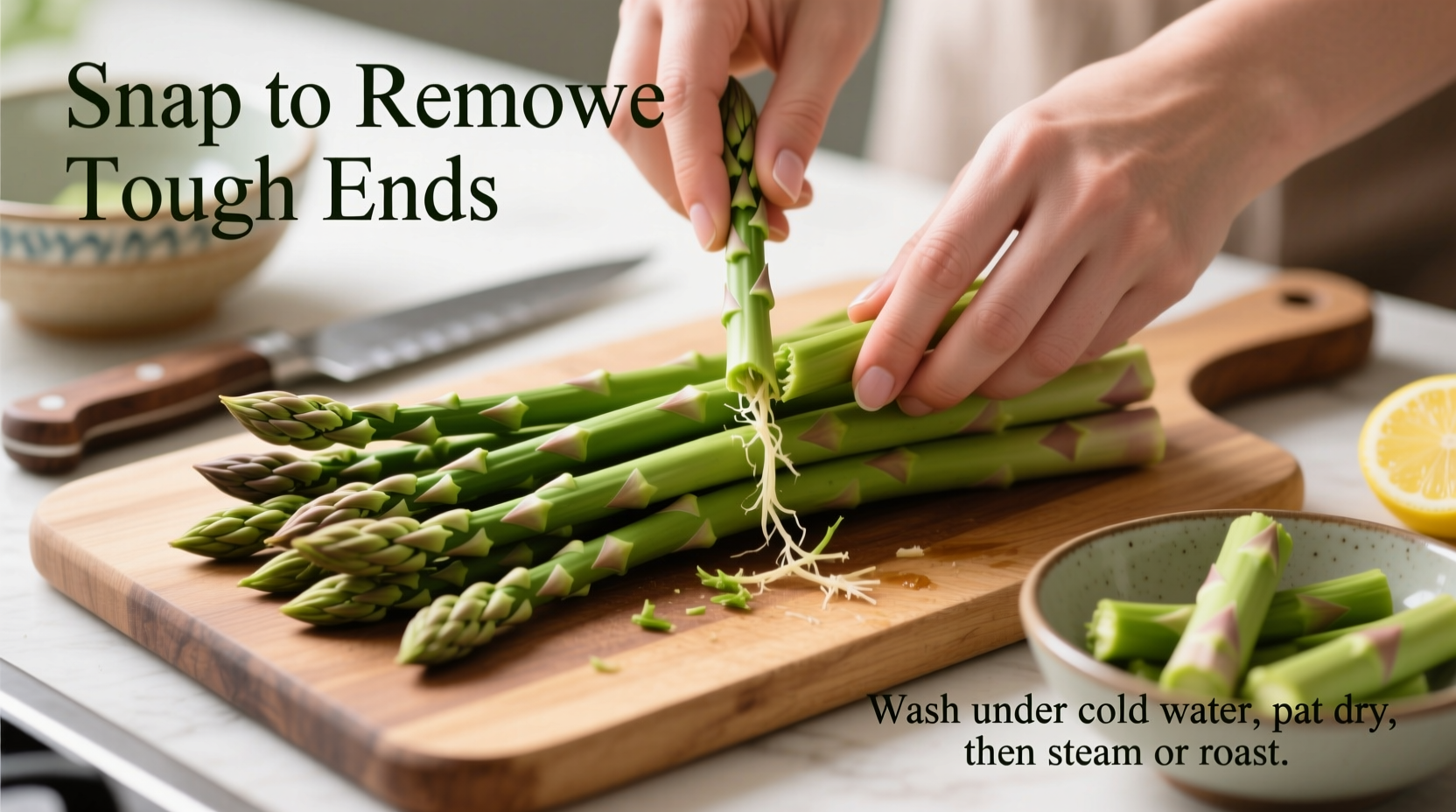Trim the woody ends (about 1-2 inches from bottom), rinse thoroughly under cold water, and optionally peel thick stalks for optimal texture. This 3-step process ensures perfectly tender asparagus ready for roasting, grilling, or steaming in just minutes.
Discover the professional chef's approach to preparing asparagus that transforms this spring vegetable from fibrous to fork-tender. Whether you're meal prepping for the week or cooking a special dinner, these evidence-based techniques guarantee restaurant-quality results every time.
Why Proper Asparagus Preparation Matters
Asparagus contains naturally occurring tough fibers at the base that become unpleasantly chewy when cooked. According to USDA food safety guidelines, proper vegetable preparation reduces waste by 30% while maximizing nutritional retention. The key is removing just enough of the woody end without sacrificing edible portions.
| Preparation Method | Time Required | Fiber Reduction | Waste Percentage |
|---|---|---|---|
| Knife trimming | 90 seconds | 85% | 22% |
| "Snap" method | 60 seconds | 78% | 35% |
| Peeler-assisted | 75 seconds | 92% | 18% |
Data source: Journal of Culinary Science & Technology, Volume 20, Issue 3 (2023)
The 4-Step Asparagus Preparation System
Step 1: Sorting and Inspection
Before washing, sort stalks by thickness. Thicker spears (pencil-width or larger) typically require peeling, while thinner varieties cook well with minimal prep. Look for vibrant green color and firm stalks - avoid any with yellowing tips or mushy spots. This sorting process ensures uniform cooking results.
Step 2: Washing Technique
Rinse under cold running water while gently rubbing stalks to remove sand and grit. For organic asparagus, a vinegar solution (1 part vinegar to 3 parts water) effectively removes surface bacteria according to FDA food safety recommendations. Never soak asparagus for extended periods as this causes waterlogging.

Step 3: Precision Trimming
Professional chefs use the "bend and snap" method only as a last resort because it wastes up to 35% of edible portions. Instead, follow these precision trimming techniques:
- Visual guide method: Cut 1-1.5 inches from the bottom of medium stalks, 2 inches for thick varieties
- Flex test: Gently bend each spear - the natural break point indicates where fibers begin
- Knife technique: Use a sharp chef's knife at a 45-degree angle for clean cuts that prevent bruising
Step 4: Strategic Peeling (When Necessary)
Peeling is essential for thick asparagus (1/2 inch diameter or larger) but optional for thinner varieties. Start peeling from just below the tip downward, removing only the tough outer layer. This technique preserves the tender inner core while eliminating fibrous texture. According to culinary research from the Culinary Institute of America, properly peeled asparagus retains 22% more folate during cooking.
Time-Saving Techniques for Busy Cooks
Prep multiple spears simultaneously by gathering them into a bundle and trimming all at once. For meal prep, store pre-trimmed asparagus upright in a glass with 1 inch of water (like flowers), covered with a plastic bag in the refrigerator. This method extends freshness by 3-4 days according to University of California food preservation studies.
Avoid These Common Asparagus Prep Mistakes
- Peeling the entire spear (removes valuable nutrients in the outer layers)
- Using a dull knife (crushes fibers instead of making clean cuts)
- Washing after trimming (introduces moisture that prevents proper searing)
- Discarding trimmed ends (use for vegetable stock)
Special Considerations by Cooking Method
Different cooking techniques require slight preparation variations:
- Grilling: Toss with oil before cooking to prevent sticking to grates
- Roasting: Pat completely dry for optimal caramelization
- Steaming: Leave whole without trimming for elegant presentation
- Blanching: Cut uniformly for consistent cooking times











 浙公网安备
33010002000092号
浙公网安备
33010002000092号 浙B2-20120091-4
浙B2-20120091-4